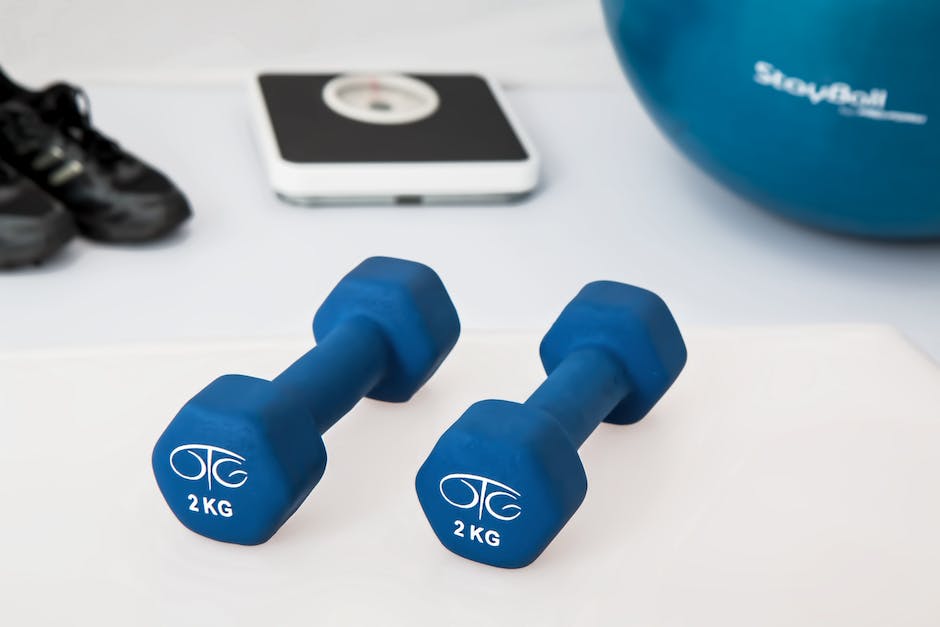Developing explosive power and strength are not just for athletes or fitness enthusiasts, but also for anyone seeking to amplify their daily living functionality. Power exercises that target the core muscle groups are pivotal in increasing one’s total body strength and metabolic rate while also enhancing injury prevention. This discourse navigates through the intense but rewarding realm of power exercises aimed at men, offering insightful knowledge on proper physical preparations, specific exercise routines, nutritious diets, and the significance of tracking progress and recovery. As you embark on this transformative fitness journey, it is essential to forge an informed path to realize the absolute benefits of your dedicated efforts.
Understanding Power Exercises
Understanding Power Exercises
Power exercises are a particular type of training that focuses on achieving the maximum amount of force in the shortest possible amount of time. Unlike strength training, which emphasizes the amount of weight lifted, power training prioritizes the speed at which the weight is moved. This type of training is based on two key physics principles: force and velocity. The concept of power exercises comes from the physics equation: Power = Force x Velocity. Power exercises include a variety of movements ranging from Olympic weightlifting, plyometrics, high-intensity sprints, and specific sports training exercises.
The Importance of Power Exercises
Power exercises are essential for enhancing overall athletic performance, improving reaction time, increasing speed, and strengthening muscles. They are of significant importance for athletes who need to produce a high amount of force in a short time, such as sprinters, football players, or weightlifters. However, power exercises aren’t solely for athletes. Ordinary people interested in improving their fitness level can also benefit from this type of training.
Power Exercise Benefits
The benefits of power exercises are numerous. First and foremost, they enhance your athletic performance by improving your speed and force. They also help in reducing the risk of injury by boosting muscle strength and enhancing joint stability. One of the significant benefits of power exercises is that they contribute to efficient calorie burning, even after the workout is over.
Moreover, these exercise types improve bone health and density, a crucial factor for men as they age. Lastly, power exercises work a wide range of muscle groups, leading to improved muscle tone and overall physical appearance.
Fast-Track Power Exercise Methods for Men
Fast-track power exercise methods for men look at obtaining optimal results in the shortest time possible. This involves a mix of high-intensity interval training (HIIT), plyometrics, and resistance training. Key exercises include box jumps, burpees, kettlebell swings, power cleans, and hill sprints.
Prioritizing compound movements that work multiple muscle groups simultaneously can also aid in fast-tracking power gain. These moves include squats, deadlifts, and bench presses. Combining resistance training with methods such as supersets (doing two exercises back-to-back with no rest) can further boost power gains and amplify your workouts’ efficiency. It must be noted, however, that correct form and technique must not be compromised for speed to prevent injuries.
Understanding Power Exercise Goals
Power exercises are designed to maximize your muscle power output by producing the most force in the shortest period. Additional benefits include promoting lean muscle gain, enhancing bone density, and increasing athletic prowess. Men, in particular, will find that these exercises help maintain testosterone levels, foster better mental well-being, and reduce the risk of chronic diseases, such as heart disease and diabetes.
Your specific goals might differ, and figuring out what you hope to gain from your power exercise regimen is paramount.

Optimum Physical Preparations
Preparation: Physical Assessment and Goal Setting
Before embarking on any power exercise regimen, it’s critical to undergo a comprehensive physical assessment. This should involve an evaluation of your overall health, a determination of your current fitness level, and a clear understanding of your body type. A medical check-up could also be necessary to identify any health conditions that might affect your exercise regimen.
As part of your preparation for fast-track power exercise, setting SMART (Specific, Measurable, Achievable, Relevant, Time-bound) fitness goals is vital. Whether you’re aiming to boost your muscle strength, enhance your stamina, or decrease your body fat percentage, having well-defined goals will guide your workout frequency, intensity, type, and timing.
Warming Up Methods
Warming up is an essential part of the workout routine that should never be neglected. Not only does it prepare your body for the vigorous exercise ahead, but it also helps prevent injuries. Several warming up methods can include stretching exercises, cardio exercises of low intensity, or performing the same power exercise at a reduced intensity initially. For men, 10-15 minutes of warming up is usually sufficient.
Equipment Preparation
Depending on the type of power exercises you plan to follow, you may require specific equipment. Before beginning the workout, it’s necessary to ensure that the equipment is in proper condition to avoid any disruptive incidents. Moreover, understanding how to use the equipment is indispensable. Both free weights and machines have their own pros and cons in the workout. While free weights help engage more muscle groups, machines offer more stability and focus on a specific set of muscles.
Ensuring Safety During Fast-Track Power Workouts
Prioritizing safety during fast-track power exercises is crucial to prevent serious injuries. This is achieved by maintaining proper technique, avoiding overexertion, and utilizing appropriate gear. For beginners unfamiliar with power routines, guidance from a certified personal trainer is highly beneficial. It’s critical to understand your body’s signals and identify the line between mere discomfort and genuine pain. Other safety measures consist of maintaining hydration levels, consuming a balanced diet, ensuring ample rest, and persistently donning the right workout gear.

Photo by derickray on Unsplash
Core Power Exercises for Men
Deciphering the Essentials of Fast-Track Power Exercise Methods
Fast-track power workouts are meticulously crafted to boost muscle strength and potency. Ranking high on the efficacy scale are exercises that focus on the body’s prime muscle groups, such as deadlifts, squats, lunges, and an array of weightlifting exercises.
Lunges, for instance, expertly target several muscles within the lower body realm, such as the hamstrings, quadriceps, and gluteal muscles. Squats, another high-powered exercise, prioritize the gluteal muscles and quadriceps, as well as the core and calves.
Juxtaposing these exercises, deadlifts activate a broader range of muscle clusters, from the glute and hamstrings to the lower back and forearms. As for weightlifting, this expansive sector targets nearly all significant muscle groups, contingent on the specified exercise being performed.
Advanced Techniques to Intensify Workouts: Circuit Training and Supersets
To fast-track your power exercise routine, you can incorporate advanced techniques such as circuit training and supersets. Circuit training involves performing a series of exercises in quick succession, with minimal rest in between. This type of training helps build cardiovascular endurance in addition to power and strength.
Supersets are another method to intensify power training. In a superset, you alternate between two exercises that work different muscle groups, without resting in between. This method not only saves time but also allows you to maintain a high intensity throughout the workout, resulting in greater muscle fatigue and thus enhancing strength gains.
Importance of Correct Form and Technique in Fast-track Power Exercises
Whichever exercise routines you choose to engage in, it is crucial to maintain proper form and technique. Improper form can not only lead to diminished results, but can also lead to injuries. It’s often recommended to start with lighter weights while learning the correct form for each exercise.
Progressive overload, or the gradual increase of stress placed upon the body during exercise training, is also a key principle in power exercises. This can be achieved through increasing the weights used in exercises, increasing in repetitions, or decreasing the rest periods in between sets.
Involving a personal trainer or fitness coach who can guide your power exercise routine could be beneficial. They can ensure that you’re performing each exercise correctly and assist in tailoring a workout routine that best fits your fitness level and goals.
Role of Nutrition and Recovery in Fast-Track Power Exercise
Diet and recovery are also essential aspects of power exercise, as your body needs proper nutrients to build muscle and enough rest for muscles to recover from an intense workout. Proper protein consumption aids in muscle recovery and growth, while carbohydrates and fats can provide the necessary energy for your exercises.
Remember, hydration is another key factor, as it plays a significant role in muscle contraction and flexibility. Ensuring you get adequate sleep and rest aids in recovery and muscle growth.
In conclusion, you can effectively increase strength and muscle mass through fast-track power training. However, it’s crucial to pair this with balanced nutritional habits and proper recovery procedures.

Nutrition for Power Exercise
Setting The Stage with Pre-Workout Nutrition
The secret to successful power exercises lies in a well-planned pre-workout meal. Comprising of slow-releasing complex carbohydrates such as whole grains, and lean protein, this meal ensures a steady supply of energy during your exercise session and prevents muscle degradation. Noteworthy examples of such meals include oatmeal with a boost of whey protein, a nutrient-rich turkey sandwich on whole-grain bread, or a hearty bowl of quinoa served with lean chicken.
Intra-Workout Hydration
Hydration is a key aspect of fast-track power exercises for men. Dehydration can lead to fatigue, muscle cramps, and decreased strength—impacting your overall performance. Thus, maintaining optimal fluid intake during your workout is crucial. Opt for water or, in prolonged exercises, electrolyte-filled sports drinks to replenish your fluid levels and keep your performance at peak.
Post-Workout Nutrition: Optimization and Recovery
Post-workout nutrition is equally important as pre-workout for muscle growth and recovery. Ideally, consume a meal rich in fast-digesting carbohydrates and lean protein within 45 minutes of your workout. This helps replenish muscle glycogen and kickstart the protein synthesis process for muscle repair and development. Examples of ideal post-workout meals include grilled chicken with rice, a protein shake with a banana, or greek yogurt topped with berries.
Supplement Recommendations
While the majority of your nutritional needs will come from a balanced, nutrient-rich diet, certain supplements can enhance your power exercise results.
- Whey Protein: Whey protein is a quick, convenient source of high-quality protein. It aids in muscle recovery and promotes muscle growth when taken post-workout.
- Creatine: Creatine is extensively researched and shown to increase power, strength, and muscle mass. Supplementing with creatine can help maximize your performance in power-focused workouts.
- Beta-Alanine: This non-essential amino acid buffers lactic acid buildup in muscles, helping to reduce fatigue during high-intensity exercise.
- Branched-Chain Amino Acids (BCAAs): Consist of leucine, isoleucine, and valine. BCAAs aid in muscle recovery and may improve workout intensity and longevity.
Always consult with a healthcare professional before adding any new supplement to your routine.
Key to Power Exercises: Balanced Nutrient Intake
When engaging in power exercises, one cannot underestimate the importance of balanced nutrient intake. Essential macronutrients like proteins, fats, and carbohydrates are the body’s main energy sources supporting the recovery and building of muscles. Likewise, micronutrients such as vitamin D, calcium, and iron, play a vital role in maintaining bone health and facilitating oxygen transport. To supercharge your power exercise regimen, make sure your diet encompasses a variety of fruits, vegetables, lean proteins, whole grains, and heart-healthy fats, ensuring you receive all the crucial nutrients your body needs.

Tracking Progress and Recovery
Measuring Your Progress in Power Exercise
When it comes to fast-track power exercises, staying on top of your progress is key. Tools such as fitness apps, heart rate monitors, and smartwatches provide a wealth of real-time information about workout intensity, duration, and the time taken to recover. Data on calories burned, heart rate, and workout duration can guide you to maintain the right intensity and confirm your workouts’ effectiveness. Most of these tools even provide progress charts and customized data, illustrating your advancements over time.
Besides relying on these tracking tools, other signs of progression include enhanced strength and endurance, noticeable muscle growth, and heightened performance during workouts. Another positive indication is reduced recovery time post-workouts, bearing witness to improved muscle strength and cardiovascular health.
Importance of Rest and Recovery in Power Exercise Routines
Rest and recovery are essential aspects of any power exercise routine as they allow for muscle recovery and growth. During rest periods, muscles repair themselves from the wear and tear of intense workouts, and this muscle-rebuilding process is what causes muscles to grow in size and strength. Proper rest also prevents overtraining, injury, and muscle breakdown.
Sleep plays a crucial role in the recovery process as it enables essential body functions like muscle repair and growth hormone release. For efficient muscle repair and growth, experts recommend about 7-9 hours of sleep per night.
Modifying or Intensifying Power Exercise Routines
As physical fitness improves with time, modification or intensification of the current power exercise routine becomes necessary to continue seeing progress. However, changes should be gradual and cater to individual workout capacity and comfort to prevent injuries.
To intensify a routine, men can increase the weight or resistance, number of repetitions, or duration of workout sessions. They can also decrease the rest time between sets or engage in high-intensity interval training.
Alternatively, if an exercise becomes too strenuous or if there’s a plateau in progress, it may be necessary to modify the routine. Replacing exercises with easier versions or reducing workout intensity, frequency, or duration can help. However, consultation with a fitness expert is recommended to maintain workout balance and efficiency.
In conclusion
Tracking progress, ensuring adequate rest and recovery, and modifying or intensifying routines as per individual fitness levels are crucial to fast-track power exercise methods for men. These strategies, coupled with consistency and determination, can help men stay on track with their fitness goals and optimize their power workouts for the best results.

Photo by samsabourin on Unsplash
Power exercise, when effectively administered, is an excellent tool in promoting a healthy, vibrant, and more active lifestyle for men. The journey begins with understanding the concept of power exercises, followed by adequate preparation and setting realistic fitness goals. Choosing the right exercise and integrating them into one’s routine is equally important. Nutrition cannot be overlooked as it fuels the power exercises, ensuring that the body has the right nutrients for energy provision and recovery. Monitoring progress is a rewarding and motivating aspect of the fitness journey, contributing immensely to adjusting the exercise routine which eventually translates to noticeable changes in strength, power, and overall health. The journey of a thousand miles begins with a single step; make that first step today, and embrace the fulfilling rewards of power exercises.
